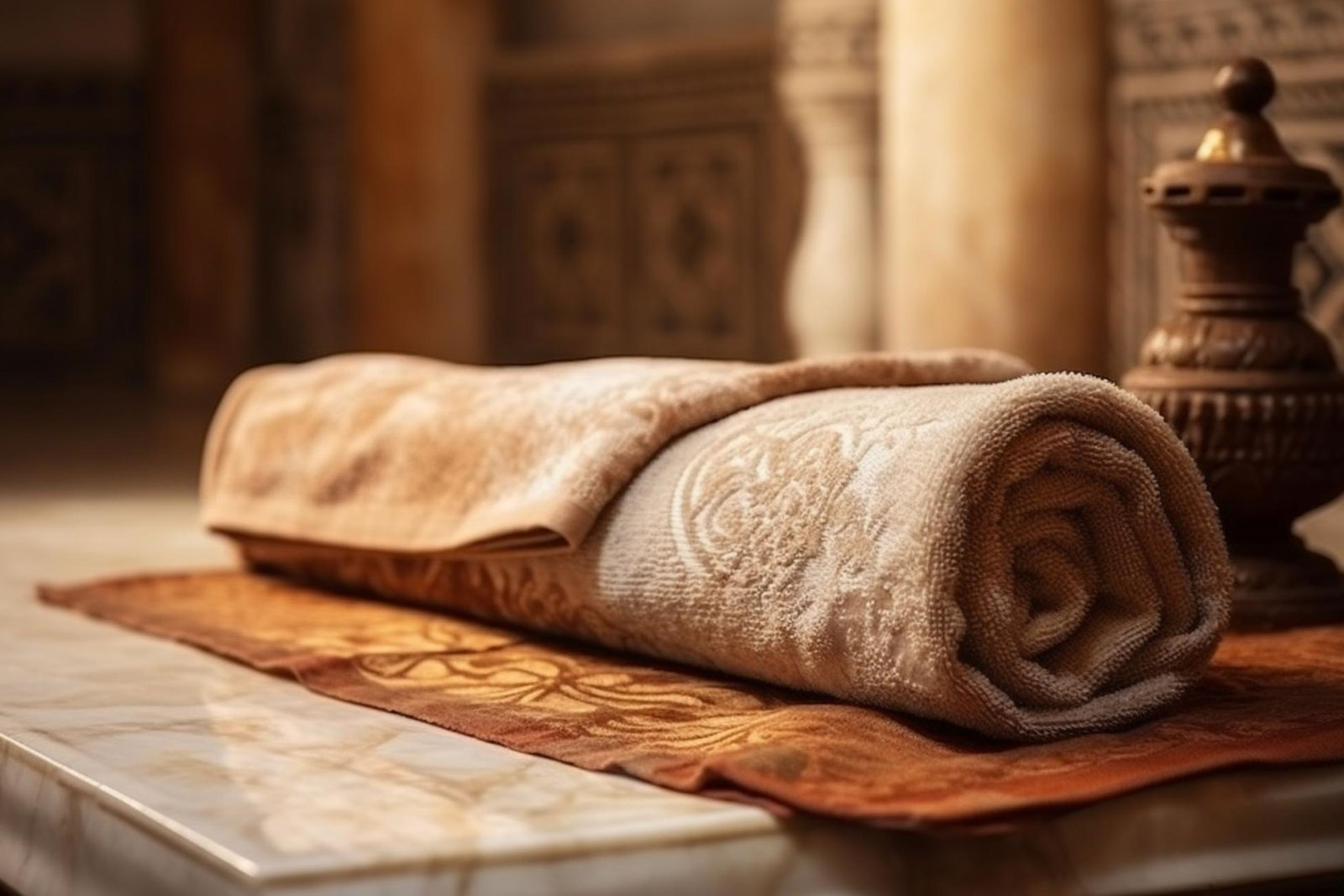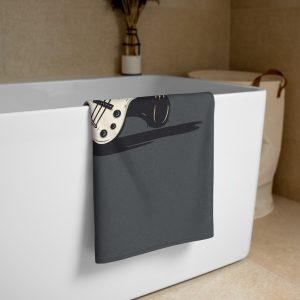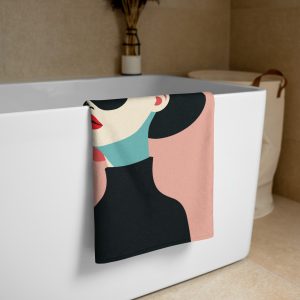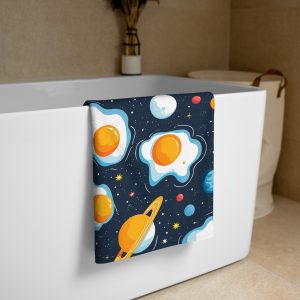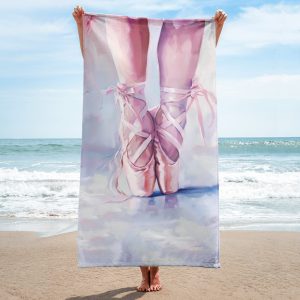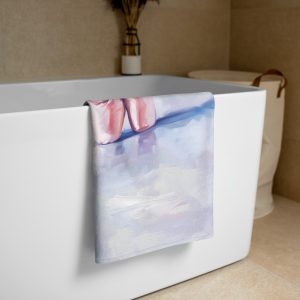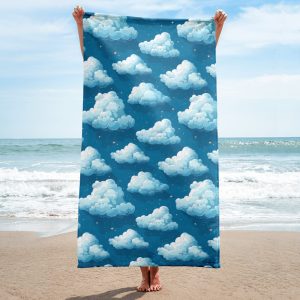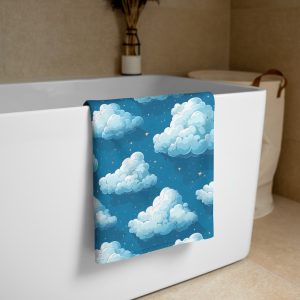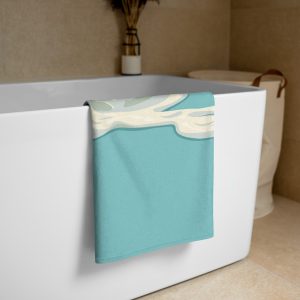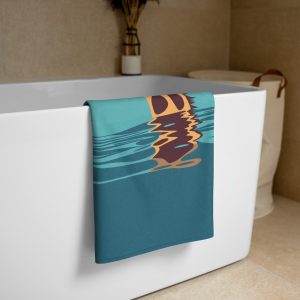The Towel’s Epic Journey: A Saga of Hygiene, Fashion, and Cultural Significance
The unassuming towel, a staple in every bathroom and linen closet, might seem like a simple and mundane object. Yet, its history is a tapestry woven with threads of innovation, cultural significance, and surprising versatility. From its humble origins as a basic drying tool to its current status as a symbol of comfort and luxury, the towel has accompanied humanity on a remarkable journey through time. Join us as we delve deep into the captivating history of the towel, uncovering its unexpected twists and turns, and revealing its enduring legacy as more than just a drying tool.
Introduction: The Unsung Hero of Hygiene
In the grand scheme of human inventions, the towel may not seem like a groundbreaking innovation. However, its impact on our daily lives and hygiene practices is undeniable. From the moment we step out of the shower to the time we dry our hands after washing them, towels are an ever-present companion, providing comfort, cleanliness, and convenience.
The towel’s story begins in the distant past, when early humans sought ways to dry their bodies after bathing or swimming. In those ancient times, nature provided the first towels in the form of large leaves, animal skins, and even humble fig leaves. While these rudimentary tools might seem primitive by today’s standards, they marked the beginning of a long and evolving tradition of using fabrics for personal hygiene.
Ancient Origins: From Fig Leaves to Luxurious Linen
As civilizations flourished, so too did the concept of the towel. The ancient Egyptians, renowned for their meticulous hygiene practices, embraced linen as their preferred material for towels. Linen, with its exceptional absorbency and quick-drying properties, was considered a luxury fabric, and towels made from it were often adorned with intricate patterns and designs. These towels served not only as practical tools for drying off but also as status symbols and expressions of personal wealth.
In ancient Mesopotamia, towels held cultural and religious significance. Woven fabrics, often embellished with symbolic motifs and intricate patterns, were used in religious ceremonies and rituals. Towels were also presented as gifts to esteemed guests and dignitaries, signifying respect, hospitality, and goodwill. The exchange of towels was a gesture of honor and a testament to the towel’s elevated status in ancient societies.
Medieval Marvels: The Rise of Turkish Towels in Bathhouse Culture
With the decline of the Roman Empire and the rise of the Middle Ages, a new chapter in the towel’s history unfolded in the region now known as Turkey. The Turkish towel, or peshtemal, emerged as a distinct and innovative form of towel. These flat-woven towels, crafted from cotton or linen, featured long, thin fibers that rendered them remarkably absorbent and quick-drying.
The peshtemal quickly became an integral part of bathhouse culture in the Ottoman Empire. Hammams, or Turkish baths, were not merely places for cleansing but also social hubs where people gathered to relax, converse, and engage in rituals of purification. The lightweight and compact nature of the peshtemal made it easy to carry and store, making it an essential accessory for bathers. Its versatility extended beyond the bathhouse, as it could also be used as a scarf, shawl, or even a beach towel.
The peshtemal transcended its utilitarian function to become a symbol of cultural identity and artistic expression. Elaborate designs, intricate patterns, and vibrant colors adorned these towels, showcasing the rich textile heritage of the Ottoman Empire. The finest peshtemals were woven from silk and gold thread, reserved for royalty and the elite, further elevating their status as objects of luxury and prestige.
The Industrial Revolution: A Turning Point for Towel Technology
The 18th and 19th centuries ushered in the Industrial Revolution, a period of unprecedented technological advancements that transformed various industries, including textile production. The invention of terry cloth in the 1800s marked a significant turning point in the history of towels. Terry cloth, characterized by its looped pile construction, offered superior absorbency and softness compared to traditional flat-woven fabrics.
The advent of terry cloth revolutionized towel manufacturing, enabling the mass production of towels at a lower cost. This made towels more accessible to the general public, contributing to improved hygiene practices in households across Europe and North America. As indoor plumbing became more prevalent, bathrooms evolved into dedicated spaces for personal hygiene, and towels became an indispensable fixture in every home.
The Modern Bathroom: Towels as a Canvas for Creativity
The 20th century saw the modern bathroom take shape, with showers, bathtubs, and indoor plumbing becoming standard features in homes. This transformation further fueled the demand for towels, prompting manufacturers to innovate and diversify their offerings.
The mid-20th century witnessed the introduction of microfiber towels, made from ultra-fine synthetic fibers. These towels boasted exceptional absorbency, rapid drying times, and lint-free properties, making them a popular choice for cleaning, drying, and polishing various surfaces.
As bathrooms evolved into more personalized spaces, towels became a canvas for creative expression. Bold patterns, vibrant colors, and playful designs adorned towels, reflecting the changing tastes and trends of the era. From the geometric patterns of the Art Deco period to the psychedelic prints of the 1960s, towels mirrored the cultural zeitgeist of each decade.
Today, towels continue to serve as a reflection of individual style and taste. Whether you prefer classic white towels for a spa-like ambiance or vibrant, patterned towels to inject personality into your bathroom, the choices are endless. Towels are no longer just functional items; they are an integral part of interior design, contributing to the overall aesthetic of a bathroom.
Beyond the Bathroom: The Towel’s Unexpected Versatility
While towels are synonymous with bathroom rituals, their versatility extends far beyond drying off after a shower or bath. Throughout history, towels have been repurposed and adapted for various creative uses, showcasing their adaptability and practicality.
- Picnics and Beach Outings: Towels have long been essential companions for outdoor adventures, providing a comfortable surface for lounging on the grass or sand.
- Cleaning: The absorbent nature of towels makes them ideal for cleaning windows, mirrors, and other household surfaces.
- Kitchen Use: Dish towels are indispensable for drying dishes, wiping spills, and keeping the kitchen tidy.
- Pet Care: Towels come in handy for drying off furry friends after a bath or wiping muddy paws.
- Fitness and Sports: Gym towels are essential for wiping away sweat and staying dry during workouts.
- Fashion Accessories: In some cultures, towels have been repurposed as scarves, wraps, or even turbans, adding a touch of flair to outfits.
The towel’s adaptability and resourcefulness have solidified its status as a versatile tool with applications beyond the bathroom.
Towels in Art and Literature: A Symbol of Comfort and Care
The towel’s cultural significance extends to the realms of art and literature, where it often symbolizes comfort, care, and hospitality. In paintings, towels are frequently depicted draped over chairs, adding a touch of warmth and intimacy to domestic scenes. In literature, towels can represent acts of kindness, hospitality, and even sensuality.
The towel’s symbolism also finds its way into religious rituals and ceremonies. In Christianity, the towel is associated with humility and service, as exemplified by Jesus washing the feet of his disciples with a towel. In Islam, towels are used for ritual ablution, a purification practice before prayer.
The Future of Towels: Embracing Innovation and Sustainability
As we venture into the future, the towel industry is poised for further innovation and evolution. Advancements in materials and technology are likely to lead to towels that are even more absorbent, quicker drying, and resistant to bacteria and odors. Smart towels, equipped with sensors and connectivity features, may even become commonplace, offering personalized drying experiences and hygiene insights.
The growing emphasis on sustainability is also shaping the future of towels. Consumers are increasingly seeking out towels made from organic cotton, bamboo, and other eco-friendly materials. Manufacturers are responding by adopting more sustainable production methods that minimize environmental impact and reduce waste. The towel of the future will not only be a practical and stylish accessory but also a responsible choice for the planet.
Conclusion: The Towel’s Timeless Legacy
The towel’s journey through time is a testament to its enduring relevance and adaptability. From its humble origins as a simple drying tool to its current status as a versatile and cherished household item, the towel has evolved to meet our changing needs and desires. It has been a constant companion in our daily routines, a symbol of comfort and cleanliness, and a reflection of our cultural values and aesthetic preferences.
As we look back on the towel’s rich history, we can appreciate its remarkable transformation and its enduring legacy. It is more than just a drying tool; it is a symbol of care, a canvas for creativity, and a testament to human ingenuity. So, the next time you reach for a towel, take a moment to reflect on its fascinating journey and the countless ways it has enriched our lives.


